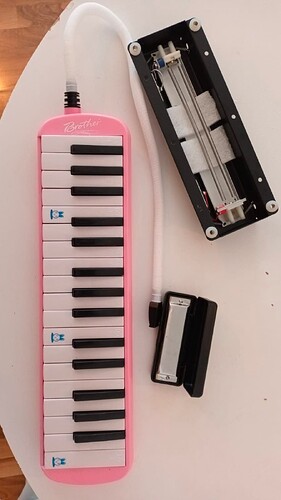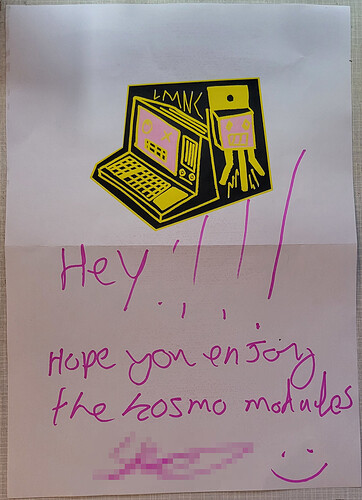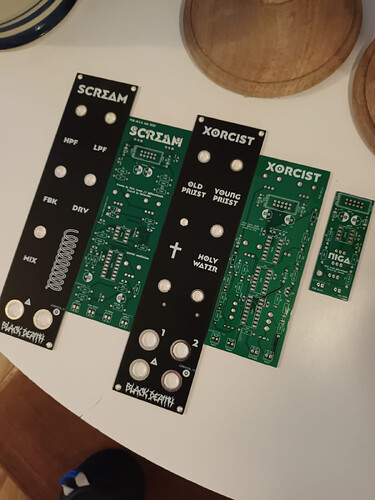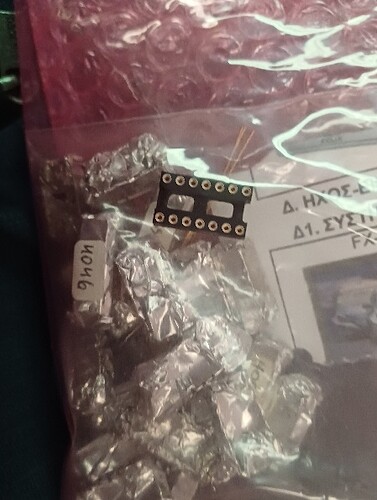Just arrived; one ATMEGA32A and again, I’m struggling to remember what i needed it for!
… It’ll come to me. Just as soon as I misplace this chip.
Good notes and ordered storage are a must people!
I only wish ![]()
Thanks! Assembled case is here: My build progress - #5887 by TimMJN
I just used tabs and glue. The main structural element is the aluminium rails. I got them done ate a local place, snijlab.nl . Quite expensive, but very reliable. Paid around 300 euro’s for two cases, with 3-day production, that is.
I find electrons are helpful in holding molecules together.
They’re nice, but they take up so much space in my rack…
Also, I’m never quite sure where I left them
I’ve been using a lot of Raspberry Pi Picos and I’ve been happy enough with them - very easy to source, cheap and capable - so I’ve been able to ignore the shortcomings (micro USB, no reset button, unlabelled pins on top). Then I found these (top board) on AliExpress and I think I might have a new favourite microcontroller board…
- USB C
- reset button (and a user one too… and a WS2812 ‘Neopixel’, and a regular user LED)
- labelled pins with almost the same pinout
- 16MB of flash instead of 2MB (yes, megabytes and not megabits)
The differences in the pinout - VRef has been moved from the edge and in its place is GPIO29 (the fourth ADC input, normally wired to the temperature sensor on the RP2040 die). 3V3_En (which I’ve never seen used - it’s effectively a power-off pin) has been replaced with GPIO23, which is the pin that runs the Neopixel. If you don’t need the Neopixel, remove the solder from the RGB bridge (as I have done) so that you don’t have it shining through your jacks.
Even with the upgrades, these are cheaper than the Pi Pico. I got 5 for £13, delivered in just under 7 days from China. They’re apparently a clone of the YD-RP2040 by VCC-GND Studio, another Chinese company - I didn’t know this when I ordered - but the originals are still well priced vs the Pi Pico. And CircuitPython supports them fully, which has become my go-to dev environment now.
Linky-dinks for anyone interested:
- Official: https://www.aliexpress.com/item/1005004004120604.html
- Clone: https://www.aliexpress.com/item/1005003796653297.html (“RP2040 Type-C 16MB”)
- CircuitPython: YD-RP2040 Download
This concludes my review.
TL;DR
Today I got some Pi Pico-type boards and they’re very good.
I had a pleasent surprise in my mailbox.
THANK YOU LMNC!
and YES, I am enjoying my Kosmo modules and this community.


(I use KiCad template files for my panels, and they have JLCJLCJLCJLC in them.)
It reminds me, now that I’ve started to order SMD stuff from JLC, a similar gotcha is that they add two tooling holes on your PCBs with SMD assembly, for the pick and place machine to hold the boards in place. On the top picture I posted a pair of posts up, you can see one hole overlapping the trimmer footprint in the bottom-left, and one in the opposite corner.
The engineer picked a fine spot, but it’s likely a different engineer would have no qualms drilling holes through your graphics or important text. They have an article up explaining how to add tooling holes - which is as simple as making 3 NPTH holes the proper size towards the edges of the board. On my second SMD order, I added the holes myself, and it looks like they accepted them.
Another blue box is here!
This is an Arduino Nano / Mozzi experimentation platform I designed two weeks ago, with the following features… assuming they work:
- Dedicated dual PWM output using THT footprints so you can match resistors to obtain the desired precision
- All I/O protected, each digital output has a corresponding LED resistor
- The 8 analog input pins can receive a jack, a pot, or a switch. You can mount the latter two directly to the board or run wires to the panel
- You can add a i2s DAC board
- MIDI IN and MIDI OUT circuits
- Two PWM outputs have an optional RC filter
- Mini protoboard for mini hacks
- Inspired by @HAGIWO’s designs, and should be able to run some of their DCOs unmodified (save for swapping pin numbers)
I’ll tell you more about it if/when it works!
And suddenly my cunning box of dedicated lab breadboards for different microcontrollers, power and midi looks so … last century. : (
These look superb and making versatile and reliable test boards is a great use of the JLC model.
When I had this done for some work PIC experiments a webdev pal put together a data document so I could track and document; components, additional connections and also “publish” each experiment’s details.
I love the black S logo too and I look forward to your DCO experiments.
This is extremely cool. I have wanted to make a VC octave switcher for a long time on top of nano, this looks like a great way to make that…
A local shop pickup. Makeshift packaging for the CMOS ICs and I have to bring my own bag, but I can’t complain with their prices.
got the last piece of the gear needed for the SMD project today .
well maybe not needed but will defiantly help my old eyes out .
@Farabide Re: CA3082 transistor arrays
These seem immensely useful, where did you get them?
Ideas for using them:
Input and output buffers for otherwise passive circuits, such as:
Buffered multiples, Buffered attenuators, Vactrol based VCA, VCF, LPG, VCmixer
Even more blinken lights!
CA3082 is listed as “obsolete” by Mouser; Octopart lists only from EOL products company Rochester Electronics as a supplier.
Thanks, I’ll take a look.









